One of the finest colors on the planet Earth - Orchid, and the orchid cattleya is the royal view of the flower that fascinates with its beauty. The orchids of the cattel have bizarre forms, bright shades that magically combined with each other, creating something unimaginable. It is not surprising that this flower is very arrogant in care. If you want to grow your own cattle orchid, then you will have to be treated with tremendous patience and gain strength. In this article, you will find all the necessary information that will help you correctly grow Cattle's orchid at home.
Orchid Cattleya: Description
Orchid Cattleya was found at the beginning of the XIX century by the traveler William Svhenson, who was from England, in Brazil. Svanson arrived in the province of Pernambuka, because he was very interested in the local flora. So he found a beautiful flower, who immediately sent to Glasgow, where William Cattle lived - a botanist who was fond of different tropical plants worked in the Botanical Garden. The scientist immediately began to study the culture in detail, which he received. He made so many discoveries that she got his name. For the first time about orchids, the world community learned in 1821, when William Cattleya's scientific work was published "The analogy of Botany".
As a scientist described this plant:
- Orchid Cattleya can acquire different form of inflorescences and colors. It depends on where it was grown - on the plain, plateau or in highlands. Some varieties grow on:
- trees trunks - we are talking about the epiphytic species of the flower that get moisture from the air, because they have a special root system (air roots, gradually die - in their place are always developing new ones);
- rocks - Lithophide orchids) who are very loved by sunlight.
- The inflorescence of orchid Cattleya can reach sizes from 5 cm to 25 cm in diameter.
- The flower has a sympoodial structure. This means that the orchid Cattleya can grow in width, as new ones are formed near her old shoots.
- The flower stem consists of several tuberidium, thanks to which the plant gets moisture, nutrients.
- One flower has several leaves - 1-3. The number of leaves in a plant largely depends on the climatic conditions in which the orchid cattelia grows.
- Cuttlay orchid flowers can be different, but they are almost equally pleasant to smell.
- This plant blooms in autumn or winter. The flowering period lasts about 1 month. However, it should be noted that at home the flower will not bloom until it becomes mature so that he has enough strength for flowering. In an adult orchid, Cutleia should have a minimum of 4 Tuberidia and the remains of past blooms. Pay attention to these indicators when you decide to buy Cattleya orchid.
Orchid Cattleya: Photo
Orchid Cattleya: Views
Orchid Cattleya is a flower that has many species and varieties. Among them are hybrid, and closely related. In other words, there are thousands of them, however, we will call the most common types of this plant, which are most often used by indoor plants for homemade farms:
- Two-color orchid cattlay. She has bright purple inflorescences that have red petals with brown overflow. Such orchid can reach a height of 60 cm.
- Bowering orchid, which has a pink color with raspberry and yellow shades. This plant can grow at home up to 35 cm in height. In the wild, it can reach 70 cm in height.
- Orchid forbesis. She has a very beautiful green color with brown overflow. There are also pink and white shades on petals. The maximum height of this cattlei is 20 cm.
- Hubble orchid cattleya - purple flower with pink tint and yellow overflow on wavy petals. This plant has rather large inflorescences, they reach 20 cm in diameter.
- Giant Orchid Cattleya Vashevich. She also has large fragrant inflorescences (diameter 25 cm). It has a white color, sometimes with a pink overflow and yellow tint on the petals.
Reproduction and landing orchid cattlay
Orchid breeding Cattleya
Flower orchid cattlay multiplies by dividing the bush. It, as a rule, must be combined with the Cutleya orchid transfers process, which should be carried out at least 4 times a year. There are several basic rules that you need to follow in the process of breeding orchid Cattleya:
- As soon as the plant has new roots, you can start to share a bush. Only for this you need to first get an orchid from the pot in such a way that the substrate remains on the roots. If you have a plastic pot, then you will have problems with this (just enough to knock the pot from all sides). If your orchid grew in a clay pot, you will have to neatly loosen the soil with a knife.
- Lower orchid into the water so that its roots with the ground are completely immersed in water. For 30 minutes, the substrate on the rhizome will completely splash, after which you can carefully remove it and disassemble all the roots of orchids. Do this procedure right in water. Make sure that the water is clean. To do this, change it periodically.
- Cleaning the roots from the substrate and dividing them, remove all the dry and damaged roots. Please note immediately if young roots do not fail. If this problem appears, it means that you too often and abundantly water orchid.
- Cut places on orchid should be sure to sweep cinnamon. Do not buy any special means, because they should not contain alcohol.
- Sweep the roots in a warm place, and then divide them.
- When you share, see that at every site of the division there was at least 3 tube (kids orchid children) with kidneys and living roots.
- Use the sterilized tools at the same time (they must be either treated with alcohol, or burned fire). If this is not done, then an infection can get into the plant, and it will be sick.
- Each sprout that you will replant must reach a length of 2-3 cm.
- It is better to plant orchid cattlay in a transparent plastic pot, because it very well absorbs the necessary sunlight.
- Fill the pot with the right substrate, in which there must be a small and medium fraction, moss-sfagnum. However, pre-lay on its bottom prepared drainage from Keramzit and Gravel. Its layer should be 2 cm. After drainage, unlock the cortex layer, pre-closed in water, foam, and then only the substrate.
- After planting the plants, suck it with small bark and perlit. Perlite is needed so that the orchid cattleya has better kept moisture (a prerequisite for those who in the house is too dry air).
Landing orchid Cattleya
Basic rules, as needed to plant orchid Cattleya:
- Prepare a plastic pot, prepare a place in it for an orchid sprout in the middle.
- At the bottom of the pot lay a claymzite drainage with a layer of 2 cm, and on top of it a little wood bark, which should be twisted.
- The cortex is poured on top of the cortex with moss-sphagnum.
- The middle of the substrate is planted orchid, which is then cheated. Near the sprout immediately, a stick-support is immediately added to be sustainable and not covered. Support can be removed after the flower is rooted.
Cutleia orchid transplantation
Orchid Cattleya is very bad to transfer the transplant process. This moment must be taken into account and do not transplant it often. It is enough that this procedure is carried out after 3 orchid flowering, and better only if necessary:
- if you start to start the root plant of the plant;
- if the rhizomet is already developing, as the pot has become small;
- if the substrate compressed or oxidized.
The transplant process is groaning, but here you need to consider some nuances:
- On the old bush of orchids, 3 new bulbs 3 cm in height should be formed (as a rule, this happens in the spring season).
- If the orchid was purchased, then the first transplant is desirable to produce in a year or after the first flowering.
Orchid Cattleya: Care
As we mentioned above, the orchid cattle is very good in care. If you violate the rules for growing this plant, it will die, often root. We list you all that you need to do that your flower pleases you with lush flowering and aroma:
- The pot with orchid should stand on the windowsill, which is well covered with sunlight. Only in the heat you need to rearrange the plant to the place where there is a shadow. If the orchids are not enough light, then its leaves will acquire a dark green color. If this light is too much for her, the leaves will begin to acquire a pale yellow color. Ideally, leaves should be just green.
- Under the pot or next to it should be a pallet with water so that the orchid absorb the moisture you need.
- From time to time, it is necessary to wipe the leaves of orchids from dust.
Temperature regime for orchid cattlay
The flower should grow indoors with room temperature. In the period from the spring to autumn, the normal temperature for the orchid is 26 °, and at night - 17 °. Only in the fall and in winter it must be transferred to the room where the air temperature is 16 °.
Watering orchids Cattleya
Watering the plant only when the substrate is completely dry. Orchid itself does not need to water, so that black spots do not appear on it, it is possible to spray it only slightly in the heat. Only water should be distilled. The ideal version of irrigation orchid is to immerse the plant into the water for 10 minutes.
Falker orchid cattleia
To make fertilizers to the substrate in which the orchid is growing, it is necessary only when the tuberetia is growing on it, and inflorescences appear. The fertilizer should include phosphorus with potassium. It is better to buy a specialized agent in a special store.
Pests and diseases of orchid cattleia
Make sure that your orchid will not be a victim of the impact on her pests, which include:
- The wave with a spider tick, which appear due to the fact that in the room too dry air. In order to prevent prevention, you just need to maintain the necessary level of humidity in the room where the orchid is growing. If the problem could not be prevented, then you need to use special pesticides to cure cattlay orchid.
- Shield, which manifests itself with dark marks on the flower leaves. They also need to be cleaned by insecticides.
- Cherver mucuded, manifested by a white bloom on the leaves of orchids. The reason for its appearance is also dry air. To destroy the pest, you need to process the plant with pesticides or soap-alkaline solid.
- Bellenka, which manifests itself on a beautiful plant with yellow and white spots. Orchid leaves because of this pest begin to die. To get rid of it, you need to wipe the orchid leaves with economic soap.
- Any other bacterium, which occurs most often due to excessive irrigation orchid, can lead to the fact that the flower is simply rotated.
If you want to grow a true tropical beauty in your home orchid cattleya, then comply with all the rules for landing and care for this plant that we have listed in this article. Let the flower pleases you with its color, the aroma of the valley and lilies, beautiful and healthy views.


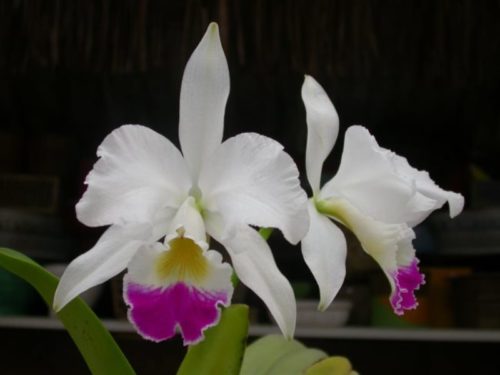
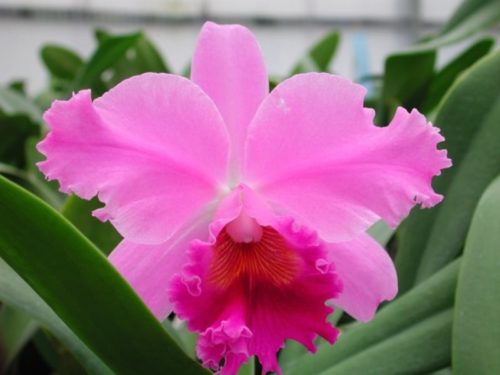
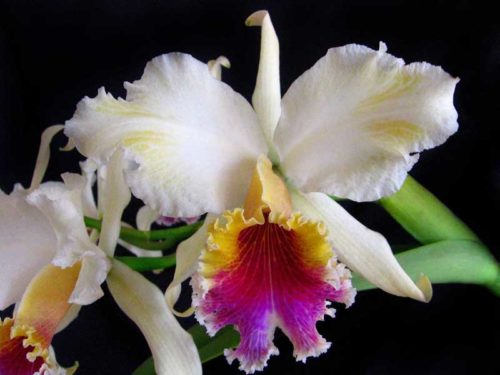
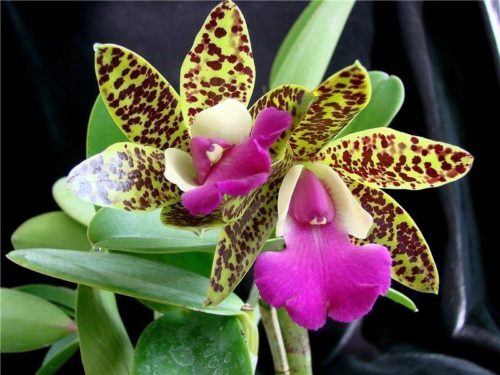
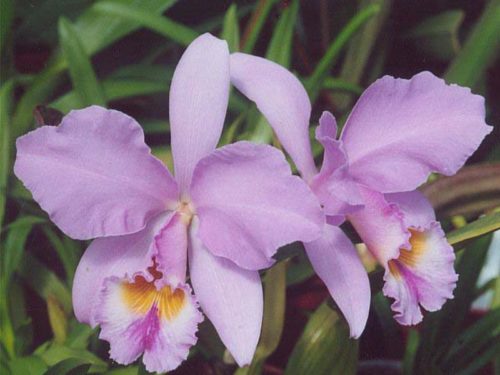


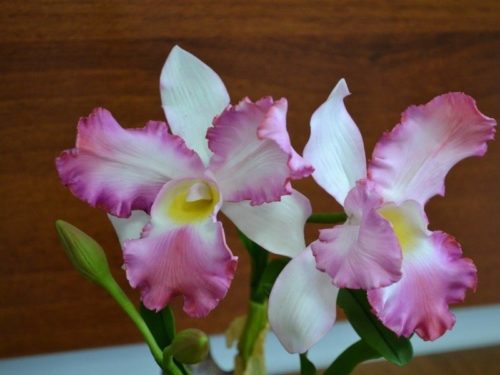
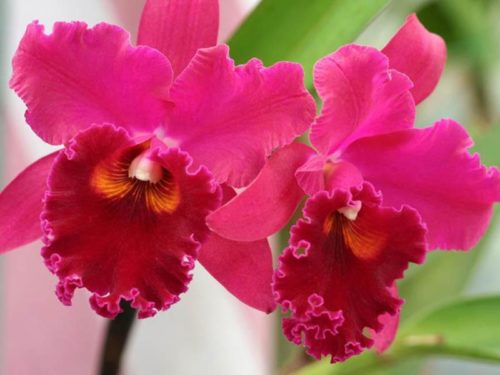
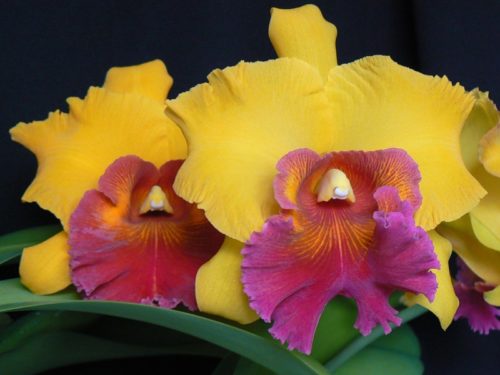












 Start a discussion ...
Start a discussion ...